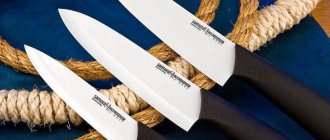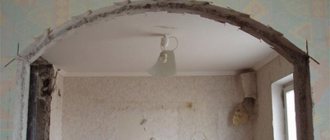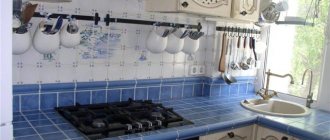Functional Features
Factory model
To make homemade equipment of this type, you first need to familiarize yourself with factory production to understand the functional features. Such a machine can be very simple, but, nevertheless, it is still an electric tool and it must be assembled correctly. To perform the simplest operations, the unit must have a powerful frame, an electric drive, an electric speed control unit, a tailstock and a headstock, as well as drive and driven clamps. In addition, for complex work it is necessary to install components to move the workpiece relative to its central axis.
Please note some general instructions that must be followed for a homemade machine:
- in order to install the workpiece in the machine, it is attached to the drive spindle and supported by the tailstock quill;
- you should select the most optimal number of revolutions for a particular size of part;
- then the workpiece is processed with the most suitable cutters;
- During the working process, the part is checked with a template, caliper or micrometer.
The work process itself requires certain skills, since your awkward movement can lead not only to defective parts, but also to injury.
Note. It will be much easier to make the machine if you can find an old frame rather than welding it yourself.
Making a simple wood lathe
Video clip of a homemade lathe
First of all, you need to select all the parts so that they fit together. A powerful frame will give the unit stability and also allow all components to be securely fastened. If you do it yourself, then use only a thick-walled steel profile for the structure, where the wall thickness is at least 3 mm. For the tailstock and front headstock, landing grooves and support platforms are made on the base.
To make a wood lathe with your own hands you will need the following components:
- an electric drive that will set the machine in motion. The most suitable engine would be from a washing machine; you can also use a powerful vacuum cleaner for this;
- to make a headstock, you should purchase a factory-made spindle with three to four pins to reliably center the workpiece as it rotates;
- for the tailstock you can use the head from a large drill;
- a pulley is needed to connect the electric drive and the headstock;
- In order to use the cutters, you will need to install a support table on the frame. The type of such support depends on your imagination - the main thing is that it is convenient for you to work.
System for changing rotation speed
To be able to change the rotation speed, install a pulley system, as in the photo above. Everything is simple here - to increase or decrease the speed, the belt is simply moved from place to place. The disadvantage of this unit is the laboriousness of transferring the belt from place to place, but it is very simple, and there is no need to separately assemble the gearbox. Of course, it is best to purchase such a unit in a store or order it from an experienced turner. It is also better to purchase cutters in a store. If you make them yourself, you will only need high-quality steel.
Note. The rotation speed can be varied from 800 to 3000 rpm. This depends on the size of the workpiece being processed and the type of wood.
Drawings with dimensions in mm
In the photos above you can see how to make a wood lathe with your own hands with drawings and dimensions
What types of chisels are there?
For professional processing of a wooden workpiece on a lathe, various working tools are required, including a rich set of chisels. Based on their functional role, they can be divided into groups:
The cross slide is equipped with side and cross-adjustable tool holders for cutting and profiling. Automatic advances vary at 4 speeds. With automatic transverse and improved cars. Designed for particularly strong jobs. The impulse is carried out by a monopole, with the speed changing by changing gears.
The tool holder's progression is automatic and also triggers horizontal, vertical and angular movements according to a graduated scale. With standard tool holder and restorer and universal plate with three jaws. The text of each product is generated and translated automatically. For more questions or any question, please contact us.
- For rough processing. They have 2 cutting edges located at an angle to each other.
- Meisel for finishing. This cutter is a blade with a flat plane and an angular sharpening on the left or right side. The angle of inclination of the cutting part may be different.
- The semicircular reyer chisel is used for working with non-standard products.
- The cut-off cutter is used to remove fragments of wood when forming a pattern.
- A boring tool for wood turning has a shoulder to help remove excess material released during the pointing process.
- Round chisel for processing round products. Its tip can be smooth or jagged.
- Cutting file for processing the end sections of the workpiece.
- The cutter stop is installed on the tool to adjust the turning depth.
The presented types of incisors are basic; there are many variations in size, modification, and quality. Experienced woodworking craftsmen often come up with their own proprietary devices for turning wood blanks.
The set consists of five lugs for sculpting and modeling work with wooden lathes.
- Ideal for beginner hobbyists with wooden winches.
- Leftover leaves.
- Presented in a wooden box.
- Total length: 370 mm.
- Wooden handle length: 240 mm.
- Cross-section length: 130 mm.
If you have any questions while ordering, or if you are purchasing from us for the first time, you can see answers to frequently asked questions here.
Delivery is free from €49, for lower orders the delivery cost is €4.95. Items sent from the nursery have fixed delivery costs. It depends on the carrier and its distribution planning, not on us. You can always specify in the comments of a request, but we cannot guarantee that they will do so. We are very active on social networks such as.
- How to order?
- You can do this through our website or by calling.
- Please be aware that the shipping company does not deliver on weekends or holidays.
- Do you have shipping cost?
The lathe chuck is of excellent quality and reliability, and the operating principle is very simple: no need to think twice every time it is reused!
To ensure that tools are manufactured in an orderly and accurate manner, craftsmen recommend creating drawings for the products containing dimensions, shape, slopes and material. This way, you don’t have to constantly think about the required parameters; sharpening wood turning tools can be done simply like clockwork.
Universal, it is designed for all models of wooden towers and several accessories in option, making it very complete and adaptable to very many swing configurations. It operates as a compressive or expanding clamping device on a piece of wood: its dovetail jaws grip into the same shape that was previously worked into the wood that is to be turned.
Types of wood turning tools
Check the threads of your lathe spindle blade! All these accessories are made of machined steel. Here is a detailed description of their dimensions. To replace the original jaws of the main mandrel and increase its clamping capacity: from 82 to 120 mm in compression and from 100 to 135 mm in expansion.
Adaptations
Craftsmen have different experiences in creating hand tools, and the sets of tools for production, accordingly, differ from each other. Let's try to imagine an average universal set of blanks:
- Metal - blank. Depending on the intended type of chisel, old files and rasps, scraps of steel pipes, square-section reinforcement, and automobile springs are used.
The feasibility of implementing a CNC milling machine project with your own hands
Useful for turning large parts such as cuts and salad bowls for example.
The lapidary ring is fixed by screwing to the tree to be rotated, and then the mandrel is clamped by expanding along the inner diameter, which has the appearance of a dovetail. It will then be used for heavy or heavy woodworking. It has threaded holes with plates of flexible material to secure the parts so that they can be returned without any risk of damage. The lightweight aluminum structure does not require excess mandrel weight. Designed mainly for the transformation of green woods which, due to the action of resins that act as lubricants, tend to slip in ordinary sponges. saw the inner faces of the jaws, then held the line tightly without the risk of escape.
- A wooden handle is necessary for ease of use of the future cutter. You can buy it ready-made at a hardware store or turn it using a wood lathe.
- Metal processing machine. This can be any setup that works with sanding wheels.
- Overalls. Even when making cutters at home, there is a risk of injury from hot sparks and metal chips. Prepare glasses, gloves, and a robe.
Machine for home
Ready product
As you already understood from the above, a wood lathe that is used at home can be quite simple. As with any other model, before you start making it, you need to study the specifics of the equipment and select all the parts for different components.
Very simple design
However, even an extremely simple model should have the following elements:
- stable frame;
- headstock and tailstock;
- electric drive (electric motor);
- speed control unit (pulley system);
- drive belt;
- clamps;
- table for resting incisors.
Very often, for the manufacture of machines of this type at home, the following dimensions are used:
- length – 800-900 mm;
- width – 400-500 mm;
- height – 400-500 mm.
Tailstock device
These parameters allow processing workpieces with a diameter of 250 mm and a length of 200 mm without a tailstock. If available, the length of the workpiece can be increased to 400 mm. As an electric drive, you can use an old emery machine made with two stones. It is very convenient to use as a headstock. For the tailstock, you can use the head of a large electric drill, inserting a rotating cone into it to center the workpieces. A thick metal profile with a wall of at least 3 mm is suitable for the frame.
When making a machine, you will certainly need tools such as:
- hand-held electric drill or screwdriver with a set of drills;
- a set of files with different grain sizes;
- grinder with cutting and grinding discs;
- DC or AC electric welding with 2 and 3 mm electrodes.
Pulley set
From the materials you will have to prepare:
- corner with a shelf thickness of at least 3 mm;
- channel;
- two pipes of different diameters - one must fit into the other;
- steel strip 20 and 40 mm;
- pulleys;
- drive belt;
- bolts with nuts and self-tapping screws.
Fixing the workpiece with a faceplate
Pulleys of different sizes are attached to the rear shaft of the electric drive so that it is possible to change the number of revolutions. A faceplate is installed on the front shaft, which will fix the workpiece.
Electric drill chuck
To make the tailstock, find an old large electric drill and remove the front part with the chuck from it. In this case, you should pay attention that the body of the drill is metal and not plastic. To secure this unit to the frame, make a metal stand and attach it so that it can move along the longitudinal axis. The cartridge, due to its design, is capable of withstanding large and long-term loads, so this unit will serve you for a very long time.
It is best to make the frame from a channel - for this you will need four pieces welded together by electric welding. In this case, you should be very careful to maintain the exact plane of the product. For the headstock, thick plywood (from 14 mm) or OSB can be used as an installation platform. The electric drive is installed on the table on which the frame will stand, on a plate, but it must be able to move so that the speed can be adjusted.
The support is installed on the bed
You can make the support yourself from pipes of different diameters, which were mentioned in the list of materials - this way the unit can move along and across the frame. To secure this device, it is most convenient to use wing nuts. Here, on the support, a thrust bar is installed on which the cutters will rest during operation.
If you have tool steel, then you can grind cutters of different shapes for work yourself - this will cost much less than buying them in a store. If you buy them in a store, you will have to shell out from 300 to several thousand rubles - it all depends on the quality of the steel.
Please note that the more often you work on a turning machine, the higher quality the steel should be. In addition, if there is a need to process hard wood, then a cheap set will become dull very quickly and you will constantly have to sharpen it.
Do it yourself
To understand how hand tools for woodworking are made, let's look at the manufacturing process of several of their main varieties.
Meysel
This is the main tool used for finishing wood workpieces. In skillful hands, this chisel is enough to create any pattern.
Changing the direction of air movement ensures optimal cooling of the tool and reduces the load on the gearbox during operation. The disc safety features a quick fix feature so it can be adapted to every task in one move. Overload protection promotes safe operation and long life. Innovative lithium-ion technology virtually prevents battery self-discharge, and the battery level indicator allows you to see the current charge level at any time.
More about lathes
60 minutes is included with a 3.0Ah high-speed charger. This angle grinder comes with a 3.0Ah rechargeable battery and high-speed charger in a rugged case for transport and storage. Please note that the cutting disc is not included.
Straight-sharpened meisel is ideal for creating rectangular notches in workpieces
. Its width varies from 4 to 40 mm, the standard sharpening angle is from 22 to 45 0. The desired slope of the blade is determined by the personal preferences of the craftsman over time.
Included as standard
With the help of additional tools, especially special lathes and scrapers, you can work these machines from the front into different shapes.
Even for those who have not encountered this type of wood cutting tool, the principle of a lathe can be explained relatively simply. Turn on the workpiece turning mechanism. We can create various shapes from the workpiece using manual lathes. We are limited by the size of the lathe and the clamping process. To make a wide variety of jars, cups, bowls or baskets, as well as candlesticks, vases or typical pieces of furniture such as upturned legs on chairs or tables or railings. Selection of machine and bit. The diameter of any unwindable shape determines the distance between the drive shaft and the turning tray. Depending on how large the diameters of the containers and other products you want to turn are, you will choose the optimal type and size of lathe.
How to make it:
- We take an old file or any other flat rectangular piece. If necessary, align the working end;
- We grind the cutting part, carrying out primary turning. We use an abrasive wheel, making sure that the blade is processed evenly in thickness without differences;
- We harden if the metal is not hard enough;
- We put the handle.
This type of chisel is easy to prepare and can be used to start creating your own collection of hand tools to gain experience and understand the process.
More expensive lathes have, for example, a copying machine to produce a range of products of the same size. This is suitable, for example, for turning furniture legs, handrails or cans of the same size onto a shelf. Chisels come in a variety of shapes and are a staple creative tool, and their quality and price can vary greatly. For beginners, drill sets can be beneficial, more experienced turners will choose individual items according to the one they use the most.
Safe turning The lathe consists of a body and a handle. This is either directly on the motor or it is connected to the motor via a pulley. Frequency lathes have three or four rotation speeds. Higher speeds are selected for a smaller part diameter and vice versa. The part of a lathe that is essential for safe operation is a complete stop. We rely on this to turn the bit. Another important element is the rigid or twisted tail, which is a sliding clamping device for securing the workpiece.
The Meisel with a beveled blade is more versatile than its counterpart:
- It becomes possible to process round products;
- An obtuse angle is suitable for creating roundings;
- The tool is convenient for processing the end of a product.
Manufacturing is similar to the previous device:
The 40cm long handle is a firm and secure grip on the lathe, which is significantly longer than rugs and is designed to hold rather than hit. Proper grip and proper mounting angle are the foundation of a rotator that you won't get right now. If you can't learn lathe directly from someone experienced, there are professional literature and many tutorials, including videos online. In any case, it is necessary to hold the chisel with both hands and firmly, with blows, with the cutting edge of the workpiece not perpendicular, but at an angle of 30 to 45 degrees, working with optimally dried wood or first roughly working on raw wood and making the product until until it dries so that the wood no longer works or cracks.
- The blank part is processed to the shape of the future tool;
- The chisel is sharpened at an angle of 70-75 0, after which the tool must be sharpened.
- We attach the handle. Meisel is ready.
Using a similar algorithm, the remaining angular cutters for a wood lathe are created. Sharpening is carried out only after careful control of the tool dimensions
.
It is also very important to securely secure the tree to turn it safely. The piece should be well centered, and if you are working on wood, such as a short beam with edges, tighten the edges into at least octagons. This saves bits and prevents the workpiece from being released during turning.
We offer high quality lathes from leading brands. In this category you will find equipment for beginner lathes and professional lathes for specialized factories. We offer high-performance equipment from valued manufacturers that will serve you flawlessly for years to come. If you're looking for a woodworking machine that will allow you to handle the toughest jobs, be mindful of the tool you're offering. Additional accessories and tools allow you to customize your device for even the most complex tasks.
Maintaining exact angles when making tools yourself is not necessary. It is enough to adhere to the necessary and convenient proportions and evenness of processing.
Semicircle
The semicircular tip of the chisels allows you to create neat notches when processing a wooden product. To make such a cutter, we mark on the workpiece the outline of the tool along which we cut. After this, we sharpen in the usual way at an angle of 25...40 0.
The radius of the chisel affects the size of the recess in the product, therefore for professional production it is advisable to make several cutters with a semicircular tip for different cases.
Groove
After stripping the bark, the wooden trunk is processed with grooved chisels; they are intended for the initial rough finishing of the material and creating a blank for the product.
In addition, grooves are used to cut concave shapes and recesses in frontal turning.
How to make a groove cutter:
- Take a tap to cut a thread of the required diameter.
- We process the metal blank with it at a distance of up to 8-10 cm from the edge, actually cutting off half of the rough product.
- We sharpen the lower convex part of the blade at an angle of 30-40 0.
Grooved homemade wood turning tools are not easy to make, but it is quite possible to understand the process.
Make or buy
The process of creating tools for working with wood is a fascinating and not always easy task. If you have the right set of tools, an inexperienced person will not have any problems - the process is intuitive, but painstaking.
Of course, you can buy a ready-made set of devices, but how much will it cost... At the same time, the wear of the metal increases over time and even brand new chisels will soon require turning. Own production is a way to get a tool under your own hands. Designer cutters with individual sizes will be adapted to the owner and his needs
.
A more detailed description of the chisel making process is presented in the video. The master talks in detail about creating a workpiece, applying sharpening and touches on other important points that are necessary for the successful completion of the work.
Special lathes are used for precise processing of wooden blanks. Their main cutting component is the incisors. Depending on the shape and sharpening edges, they can perform several types of operations.
Three-phase machine
Machine with three-phase motor
This model is more complex and requires a three-phase motor, therefore, three-phase power must be supplied to the house. In this design, the rotation speed is no more than 1500 rpm, but the machine itself is quite powerful and can process large pieces of hardwood.
Star (left) and delta (right) connections
Motors come in different types, so the connection diagram is also different - they can be connected “star” or “delta”, as shown in the photo of the diagram above. For large workpieces, a large faceplate is placed on the motor shaft, and for small parts, small washers are used. The faceplate has something similar to peaks on which the part is hammered.
The working process
After centering and securing the part, remove the first layer of wood 1-2 mm, and this can be done even with an ordinary sharp chisel. Next, use a finishing cutter, giving the workpiece the desired shape. Sanding is done with sandpaper if necessary. You can control the dimensions of the workpiece either with a template, or with a caliper, or even with a micrometer if high accuracy is needed. The rest of the assembly is done in exactly the same way as with a conventional electric motor, the only difference is connecting to the network and selecting the required starting capacitor.
Video: manufacturing process of a turning mechanism
But what to do if you have a three-phase motor, but no three-phase power? There is a way out here too - to start, you can use an ordinary light bulb, connecting it to the working and free phase. It will transmit voltage to the starting winding and after starting it can simply be turned off if it is not needed to illuminate the room. The method is proven and some people have been using this connection to process materials for years, although the power is somewhat reduced.
Application of woodworking machines
Question: What types of equipment are used in wood processing?
Answer: A woodworking machine is a machine for processing wood to give it the desired size and shape. According to the type of work performed, woodworking machines are divided into: wood-cutting, bending, assembly, for applying glue and finishing.
On wood-cutting machines, various cutting tools separate a certain part from the wood in order to obtain blanks, parts or products of given sizes and shapes with surfaces of the required quality.
Bending machines give wood the required shape by bending without breaking the bond between wood particles.
Assembly machines perform work on connecting individual parts into units and products. These include machines for assembling parts, gluing, connecting with tenons, screws, dowels, nails, staples, etc.
Glue applicators are equipped with rubber coated rollers or brush, disc, roller or injection mechanisms.
Finishing machines are designed for painting products and applying decorative and protective coatings to their surfaces, processing varnish coatings (grinding and polishing). Dyes are applied on machines with rollers; decorative, varnish and protective coatings - on special varnish-filling machines, on lines using jet pouring. To grind the surfaces of products for coating with varnish, grinding machines are used - usually of the belt type (multi-belt continuous). The surfaces of the product are polished on roller-type machines, and sometimes using tampons. The most productive machines for grinding are roller-type machines, whose rollers are assembled from special cotton discs.
Question: What types of woodworking equipment are used most often and what are the main methods of woodworking?
Answer: Wood-cutting machines are the most common in industry. Wood cutting is carried out by sawing, milling, planing, drilling, chiseling, turning, peeling and sanding.
Sawing is performed with saws that perform reciprocating, rotary or linear motion.
Milling is carried out by rotating cutters (straight-line knives or shaped cutters).
Planing is carried out on planing machines, in which the cutting knives are stationary (the workpiece moves) or perform a reciprocating movement and cut off a thin surface layer of wood.
Drilling and slotting are performed with special drills on drilling, drilling and slotting and slotting machines. Chiselling is usually done with a chiselling tool to create holes in wood, primarily for tenon joints.
During the turning process, chips of uniform thickness are cut from the surface of the rotating body.
Peeling is the development of a cylinder in a spiral into a thin strip (veneer). Peeling is similar to turning with radial feed, but is accompanied by crimping of chips (veneer) and is carried out after preliminary steaming of the wood being processed.
When sanding wood, the role of cutters is played by the grains of abrasive materials.
Wood-cutting machines (especially circular saws, band saws, milling machines, and grinders) are characterized by high cutting speeds (20-60 m/sec), and sometimes 100 m/sec or more. Due to high cutting speeds, the working shafts of many types of machines have a rotation speed of 3 - 6 thousand rpm, and of copy milling machines - up to 30 thousand rpm.
Machines with reciprocating tool movement (sawmills, plywood planers, and some others) have a low cutting speed (not exceeding 7-8 m/sec.).
Most machines are equipped with individual electric drives with power from 0.5 to 200 kW. Modern machines and automatic lines widely use hydraulic and pneumatic drives, photo relays, high frequency current (100-400 Hz), and remote control.
Question: What equipment is used to process sawmill waste?
Answer: Recycling of waste is called crushing. It is carried out in crushing or chipping machines of rotary and disk types in order to obtain technological chips for pulp mills from lump waste from woodworking industries (slats, slabs, etc.). On such machines, lump waste is crushed by knives mounted on a shaft, or by metal bars mounted on a rotating rotor of the machine.
By the way, shavings are not always a production waste. Sometimes it can be a product (for example, veneer when peeling and a thin board when cutting without sawdust). Chipless cutting occurs during splitting (wood splitters), cutting veneer (scissors), cutting with stamps (veneer cutting machines), crushing (crushing and chipping machines).
Question: Is it possible to perform the entire woodworking cycle on one machine?
Answer: Then you should use multi-operational machines (combined and universal). Combined machines have several spindles installed on a common frame, each of which can work independently of the others, while universal machines are equipped with one spindle, on which various tools are alternately mounted.
A separate group consists of multi-operational automatic and semi-automatic machines, aggregate machines, automatic lines and combine machines that perform (simultaneously or sequentially) several operations on the workpiece.
Automatic lines are widespread in large specialized enterprises.
Question: What is a spindle?
Answer: A spindle is the working shaft of a machine tool. A tool (cutter, drill, grinding wheel, etc.) or a workpiece is fixed to the spindle. The spindle is subject to high requirements for rotational accuracy, which significantly affects the processing accuracy. Therefore, it is installed on high-precision rolling bearings or plain bearings, and especially high-speed spindles of internal grinding machines (rotation speeds up to 100 thousand rpm) are installed on air-lubricated plain bearings. The spindle is driven through a gear or belt drive, as well as directly from a built-in electric motor or air turbine.
Problems of choice
Question: How to choose the right woodworking machine?
Answer: You should pay attention not only to its characteristics, but also to the presence of a warranty period, the possibility of commissioning, as well as the reliability and maintainability of the machine.
It is also necessary to approach this decision from an economic point of view: how quickly it can pay for itself. You should also take into account what raw materials will be used and what diameter logs are supposed to be sawed.
Question: Does the choice of sawmills depend on the type of wood?
Answer: If you intend to use raw materials with a diameter of 50 - 80 cm, then you can choose a band saw machine. But for sawing softwood logs up to 1200 mm in diameter, it makes sense to choose a circular saw. If you need to saw oak, larch or rosewood, then a circular saw will not work. The fact is that this is a very expensive raw material, and when working on circular saws, a large amount of sawdust is formed.
Question: Does the purpose of the equipment depend on the type of cutter installed on it?
Answer: The cutting tools used in both hand-held electric saws and woodworking machines are a chain, a saw blade and a saw blade (on a sawmill). The type of cutter determines the scope of application of various types of equipment.
The chain saw is designed for cross-cutting round timber, beams and thick boards. The cutting tool in these saws is a saw chain driven by a sprocket through a gearbox and an electric motor.
Circular saws are most popular for use not only in construction, but also for domestic purposes. Electric circular saws can be used to cut wood along and across the grain, select quarters, and cut tenons and ridges.
Question: Why are circular saws so widespread?
Answer: Indeed, in the northern countries they most often saw on circular saws.
They are used for two reasons. Firstly, in winter conditions the circular saw works so reliably that no other can compare with it. Therefore, Americans, Canadians, Finns, and Swedes mainly produce and use these machines. A circular saw is a powerful device that can cut frozen wood very easily. Secondly, in a circular saw you can operate several saws throughout the year; their maintenance does not require expensive sharpening equipment.
Circular sawmills have lower energy consumption than sawmills. Their operation does not require a massive foundation and there is the possibility of individual cutting of each log. Complexes using this equipment have fairly high productivity.
But there are also disadvantages: the question arises about the need for waste disposal, since the cutting width of circular saws is 6-7 mm, so a large amount of sawdust is formed, just like with frame saws. In addition, the cost of the machines themselves and the circular saws for them is quite high! Saw sharpening should only be carried out by highly qualified personnel.
Question: What are the features of using a sawmill?
Answer: The sawmill is designed for longitudinal sawing of logs and beams of various types of wood into lumber. Sawing of logs is carried out by reciprocating movement of the saw frame with a set of saws mounted on it along guides. The movement to the saw frame is transmitted from the main shaft by a connecting rod. The sawmill can be used as a first-row machine in high-power sawmills and in small industries.
Question: Why is there an opinion that installing a sawmill is expensive?
Answer: Sawmills require a massive foundation, have high energy consumption, a low yield of finished products, a large amount of waste, and the need to sort the lumber by diameter. Therefore, as a rule, on the basis of this equipment, stationary sawmill complexes with access roads, equipped with lifting mechanisms, sorting areas occupying a large area, powerful log transports, areas for sorting and packaging of finished products, equipment for removal, temporary storage and disposal of waste are created.
But good performance compensates for all the initial costs. Sawmills also have other positive aspects. The most important thing is unpretentiousness in work.
The machines operate in unheated workshops and sheds. Maintenance of a sawmill is very simple, and in almost any area you can find a person who has an understanding of sawmills and can work on it.
Question: Which sawmills are in greatest demand?
Answer: Sawmills with belts 35-50 mm wide are most popular among consumers, since these saws are relatively inexpensive and have a productivity of 8-12 cubic meters of saw logs per shift. Designed for professional sawing and working with large-sized sawlogs (800-1000 mm). They can be horizontal, vertical, or with the band saw positioned at an angle. Their maintenance comes down to timely sharpening and periodic setting of the teeth.
Performing these operations does not require special qualifications of personnel.
Question: What are the advantages of strip wood cutting technology?
Answer: Belt technology is best suited for those who are taking their first steps in the sawmill business. The relative ease of learning and operation, the possibility of gradual development of production create good conditions for starting.
By purchasing only one band saw, you can obtain edged boards of export quality.
This technology is indispensable for deep processing of wood to obtain geometrically accurate blanks for laminated veneer lumber, panels and furniture blanks.
The advantage of band saws is especially noticeable when sawing large-sized lumber. It becomes possible to process logs with a diameter of 70-80 cm or more, which is important for those who saw valuable hardwood.
So, the main advantages of tape technology are as follows:
- due to the thin (1.5-2 mm) and smooth cut, the amount of sawdust is significantly reduced;
- product yield increases (up to 75-80%);
- The rigid and reliable cutting head does not require additional adjustments and ensures cutting accuracy and strict adherence to the geometric parameters of the board, which allows for reduced tolerances.
Question: What are the conditions for trouble-free operation of a band saw machine?
Answer: The main requirement is to work with one band for no more than 1.5-2 hours. According to the recommendations of all band saw manufacturers, it is necessary to change the band after 2 hours of work, regardless of whether it is dull or not. One belt, with normal care (timely and correctly sharpened and spread), processes 60-80 cubic meters of saw logs.
Question: Which log saw is better: band or disk?
Answer: It is impossible to answer definitively! Adherents of band sawing cite the large cutting thickness (up to 8 mm!) and small cutting diameter (up to 300 mm) as the main disadvantage of a circular saw. These numbers are far from real. In fact, the thickness of a large (1000 mm) diameter disk is 3.6-4.2 mm. The spread is 0.4-0.5 mm per side. As a result, the cut is 4.4-5.2 mm, which is quite a lot compared to the tape, but not 8 mm! The maximum cutting height on a 1200 mm disc is 480 mm, which corresponds to a log diameter of 600 mm.
And now the main argument in favor of circular sawing is the high speeds at which lumber is fed to the saw. On a tape machine with a narrow belt, the speed cannot be more than 0.25 m/sec and one pass of the carriage on a 6-meter log takes an average of 30-40 seconds. On machines with a wide saw, this indicator is better, the feed speed reaches 0.5 m/sec and one pass is carried out in 12-24 seconds. On the disk, the longitudinal feed can reach 1.5 m/sec! One pass can be completed in 4-6 seconds!
With a fairly high cost of saws (from 450 to 1200 dollars), one saw is enough for 1.5-2 years of work. But once every 2-3 weeks the saw requires special preparation (forging, rolling, etc.), which, as a rule, is done in a workshop. For example, saws from Karelia are sent to Finland for preparation. The question immediately arises: how far is such a workshop from you?
At the same time, the productivity of a band saw machine, for example, NR-99, for edged lumber is 10-12 cubic meters per shift, which is quite comparable with the productivity of disk machines. But preparing the tool requires much less qualification from the sharpener, and the cost of saws is 10 times less.
Let's face it, if a worker ruins a $30 saw, it's less of a loss than a $500 saw.
Main types of woodworking equipment
Question: What are woodworking milling machines?
Answer: A woodworking milling machine has a rotating vertical spindle on which a cutter is mounted, and is used for planar, profile and shaped cutting of workpieces.
There are simple milling machines (single- or double-spindle), rotary-type and copying machines. Single-spindle machines have a frame with a table and a spindle mounted on a movable support. Processing of workpieces is carried out using guide rulers. In a two-spindle machine, the spindles rotate in opposite directions, which makes it easier to process curved workpieces and reduces the likelihood of chipping and scuffing.
For flat and shaped milling, a rotary-type milling machine with a rotating table is used, on which the workpieces are fixed.
The copy milling machine is equipped with a device for working according to a copy (template) and is used for the production of small, precise and sculptural works.
If you install a milling machine directly on a construction site, then it can be used to process grooves for rectangular interlocking joints of wooden beams for walls and partitions of houses. The timber to be processed is fed manually or using machine tools to the receiving table.
Accuracy of beam positioning during processing on the machine is ensured by longitudinal guides, transverse stops installed along the measuring ruler and manual screw clamps, which are mounted on the machine, as well as on the receiving and behind-the-machine tables.
It is also possible to mill a log, rounded log, as well as a rectangular or profile beam of a transverse cup (groove) for assembling houses “in the corner”.
Question: What types of cutters are there in woodworking?
Answer: A milling cutter (from the French fraise) is a multi-toothed (multi-edged) cutting tool in the form of a body of revolution for processing material by cutting.
By type (purpose), the following types of cutters are distinguished:
- cylindrical;
- end;
- disk groove (one-, two- and three-sided);
- sober (slotted);
- end, keyed;
- T-slot;
- corner;
- shaped (including modular-disk and finger);
- worm-type
According to their design, cutters are:
- solid;
- composite;
- prefabricated;
- with insert teeth (knives);
- complete.
By mounting method:
- mounted;
- with a shank (conical or cylindrical).
The material of the cutting part is very important - high-speed steel, carbide, composite material.
Question: What woodworking operations are performed on a tenoning machine?
Answer: This woodworking machine is designed for forming tenons and lugs on parts connected to each other in products of woodworking enterprises (blanks for the manufacture of wooden windows, doors, drawers, etc.).
There are tenoning machines for frame tenons and box tenons. Tenoning machines can be single-sided (in 1 cycle, tenons are cut at 1 end of the part) and double-sided (tenons are cut simultaneously from both ends of the part in 1 working cycle).
The box type tenoning machine can form both straight tenons and dovetail tenons. Straight tenons are formed by conventional cutters mounted on a work spindle, while dovetail tenons are formed by end mills mounted on vertical spindles. On double-sided box tenoning machines, tenons are formed according to a positional-pass pattern: filing the ends of the workpieces to size occurs when the workpiece moves, and the formation of tenons occurs when it is stationary. Frame tenons are cut on single-sided and double-sided tenoning machines.
On a single-sided tenoning machine, the workpiece is mounted on a work table that performs a reciprocating movement, and on a double-sided tenoning machine, the workpiece is mounted on special chains with stops that perform a continuous translational movement.
The workpiece is first cut to the required size, and then tenons or lugs are formed.
Question: What are the distinctive features of the double-sided automatic tenoning machine?
Answer: This type of equipment is designed for milling tenons and lugs on both sides in frame and frame structures made of wood, formatting chipboard and furniture boards to a given size, for fitting around the perimeter of door leaves and window frames, making parquet and floorboards. Due to the widespread use of frame and frame structures, the machine can be used in woodworking enterprises, furniture and carpentry production of any capacity.
When used in mass production, the machine can be integrated into a production line. The machine has six cutting supports, a conveyor with steplessly variable feed speeds, and top drive clamping devices. The first in the flow of material are 2 scoring saws, then there are 2 miter saws for trimming the workpiece. The last ones along the material supply are 2 vertical milling supports. Workpieces are moved from support to support using a conveyor.
Distinctive features:
- feed speed - steplessly adjustable, changed by a variator, ensures smooth and reliable feeding of workpieces (cardan mechanism);
- high rotation speed of the milling spindle (7500 rpm) ensures high quality of the resulting material;
- a wide range of tools installed on the machine significantly expands its operational capabilities, allowing a significant increase in the range of products;
- compact arrangement of all components and assemblies, powerful cast frame help reduce all possible vibrations;
- The digital control unit can be installed on each machine and separately on each spindle, which greatly simplifies setup and control.
Question: What operations is a jointer used for and how is it designed?
Answer: A planer is used for straight planing of wooden blanks along faces or edges. It has a frame on which a round knife shaft (usually has 2-4 knives), a work table, a vertical knife head, a guide ruler and a removable (or stationary) feed mechanism are mounted (this mechanism is absent for manual feed).
Typically, a jointer processes one face or one edge at a time. The workpiece is oriented along the guide ruler with the vertical head removed. When processing the face and edge simultaneously, a knife shaft and a vertical milling head are used, mounted at an angle of 90° to the table surface. The work table of a jointing machine consists of an elongated front part, set in height to the thickness of the layer being cut, and a fixed rear part, the surface of which is at the level of the circumference of the knife blades.
Question: What kind of work is a thickness planer designed for?
Answer: A thickness planer must be used for flat planing of boards, beams or panels to size in thickness. The cutting tool of a thickness planer is a knife shaft. Single-sided thicknessing machines have one knife shaft, which is used for thicknessing (calibration) of workpieces; the shaft is located above the work table, along which the workpiece is moved by feed rollers. On double-sided machines, another knife shaft is mounted on the work table. This shaft is located first along the workpiece; it is used to plan the lower layer of the material. The thickness of the resulting part is determined by the position of the lifting work table. Thicknessing machines usually process parts that have been previously planed on jointing machines.
A thickness planer can process workpieces with a width of 315-1250 mm and a thickness of 5-160 mm. The diameter of the knife shafts is 100-165 mm (2 or 4 knives are mounted on the shaft), the rotation speed of the shafts is about 5 thousand rpm. The feed speed of workpieces in a thickness planer is 5-30 m/min.
A type of double-sided thicknessing machines is a planer-thicknessing machine.
It has a box-shaped frame, in the upper part of which a feeder, 4 base tables, 2 jointing and 2 thicknessing knife heads are mounted; The frame contains a fan and a feed mechanism drive. The workpieces are placed in a cassette with transverse stops installed between two feed chains; Up to 30 workpieces can be processed simultaneously.
In these machines, in the jointing section, a rectilinear plane is created near the workpiece, relative to which final processing to size is carried out in the thicknessing section.
Question: What is the purpose and working principle of the peeling machine?
Answer: The peeling machine is designed to produce thin transverse chips, the so-called peeled veneer, from short logs (churak). It is used in the furniture industry, plywood and match production, etc.
When peeling, a knife mounted on a support cuts off a layer of wood (veneer) in the form of a wide continuous strip along the entire length of the rotating block. To increase the strength of the veneer and improve the quality of its surface during peeling, the wood is crimped using a pressure ruler, and the wood is subjected to hydrothermal treatment (for example, steaming). The thickness of the veneer obtained on a peeling machine ranges from 0.1 to 10 mm, the cutting speed is from 1 to 6 m/sec. In order to reduce the diameter of the unpeeled residue (pencil), the machines are equipped with a support rest that prevents the block from deflecting.
Question: What is a caliper?
Answer: A support is a device that serves to secure a cutting tool and impart feed movements to it.
The support consists of:
- carriage (lower slide), which moves along the bed guides;
- cross slides sliding along carriage guides;
- rotating part with guides along which the cutting carriage (upper carriage) moves. The rotating part of the support can be installed at an angle to the line of the centers of the machine.
Question: What is the purpose of the support rest?
Answer: This is the name of a device that serves as additional support for parts rotating during processing. The steady rest prevents parts from bending due to cutting forces and their own weight, and increases their vibration resistance. It is used when processing parts with long protruding parts. The steady rest can be fixed (usually attached to the guides of the bed) or movable (moves along with the support, carriage, etc.).
Question: For what purposes is a cross-cutting machine used?
Answer: This is a woodworking machine for transverse division of material. The cutting tools of a cross-cutting machine can be band saws, circular saws, or knives. Band saws are used for sawing raw materials into workpieces in the production of joinery, models, etc. Knives are used when cutting glazing beads for windows and furniture trims, trimming veneer for veneering panel parts, etc.
The most widely used are circular saws, which are manufactured with an upper and lower saw arrangement. There are a type of cross-cutting machine (the material being processed is continuously fed to the saw) and a positional type (the material is fixed in the desired position, trimmed, and then removed).
The saw diameter of circular saws is 0.1-3 m; thickness of the processed material is 0.01-1.2 m, length 0.1-40 m. Drive power from 0.2 to 80 kW per saw; the weight of the machines reaches 10 tons.
Question: What are the capabilities of round rod machines?
Answer: Round-blade machines make it possible to produce cylindrical (round) parts from square-section blanks of various types of wood, as well as synthetic materials.
Scope of application: production of furniture, sports equipment, household products and others, in which cylindrical wooden parts with a diameter of 20 to 50 mm are used.
Question: What are the advantages and disadvantages of multi-rip machines?
Answer: Multi-saw machines are used to increase the productivity of the sawmill flow, since it becomes possible to saw with several saws at once (from 2 to 5-6 and even more). They are used as a second row sawmill for sawing timber, longitudinal, straight cutting of bars and boards from any type of wood. Can also be used for cutting boards. Different widths of bars and boards are ensured by adjusting the saws of multi-saw machines using replaceable bushings.
Advantages of multi-rip machines:
- high performance;
- ease of tool preparation;
- Easily integrated into sawmill flows.
The disadvantage of multi-rip machines is their high energy consumption.
Question: What kind of work is a rounding machine used for?
Answer: The rounding machine is used in the construction of houses from rounded logs.
The rounding machine carries out circular stripping (rounding) of logs to a given diameter, as well as selecting longitudinal and transverse grooves. On a common frame, which moves along guides, there are devices for making longitudinal and transverse grooves. Circular peeling and grooving can be carried out simultaneously, which significantly reduces the processing time of the log.
A striking example of such equipment is the Terem 6500 machine. It is designed for rounding logs, making grooves, bowls and drilling holes for dowels. The principle of operation is similar to a lathe, only the role of the cutter here is played by a rotating cutter. The log, fixed in the centers (for ease of fastening they have supporting screw mounting jacks), rotates towards the milling unit located on the carriage.
The carriage, driven by a winch mechanism, moves along the log at a speed of 2 m/min. In this case, the cutter removes layer by layer of excess wood until the required diameter of the log is obtained. Next, the longitudinal and transverse grooves are milled. If necessary, the sides of the log are jointed. Due to the fact that processing is carried out relative to the axis of the log, the product does not repeat the curvature of the original material - this is another advantage of the Terem-6500 machine.
The machine does not require a foundation; it can be installed outdoors, under a canopy.
Distinctive features of the Terem-6500 rounding machine:
- low energy intensity (14.1 kW);
- the milling unit is capable of removing the crown cup at an angle from 0 to 45°;
- the role of a cutter is performed by a rotating cutter;
- payback up to 4 months.
Question: How is the universal rounding complex designed and operated?
Answer: The complex is used for processing thin timber (maximum butt diameter of a log is 260 mm) and producing rounded and log logs (diameter from 120 to 200 mm), timber and edged boards.
The following are installed in series on the steel frame:
- feed mechanism;
- cylinder unit;
- milling unit;
- saw unit.
The complex works as follows: the log is captured by the ripples of the feed mechanism
Wood lathe from a large electric drill
Lathe from an electric drill
If you are not going to process large parts and do it daily, then you can use an alternative. That is, make a unit from a drill, as in the top photo. A powerful frame is not needed here, and in addition, you can work on such a mechanism even without much experience, and acquire skills while working.
The frame here is assembled from wooden beams, and a support bearing with a shaft mounted on it can be used as a support headstock. To fix the workpiece, you need an attachment for a large drill. But with all this simplicity, a number of shortcomings are revealed, such as:
- reduced level of reliability;
- the ability to process only small workpieces;
- dimensional errors when processing the part.
Note. You can gain work experience with such a model, and in the future make a more advanced machine on which you can process large parts.
Do-it-yourself sharpening of cutters
The final stage of manufacturing is the formation of the cutting part of the wood tool. To perform this type of work you will need an electric sander and several types of wheels.
Primary sharpening is carried out even before the hardening stage. This can be done using regular abrasive wheels. After hardening is completed, the cutter is treated with sandpaper. During operation, the blade of the cutters will inevitably become dull. At the same time, they can form small chips and irregularities. They need to be removed.
To do this, process it using a corundum wheel. The force applied to homemade tools is small, since the hardened part is susceptible to chipping. To increase the service life, experts recommend making several wood cutters of the same type.
In the video you can see an example of cutters for a machine made by yourself:











